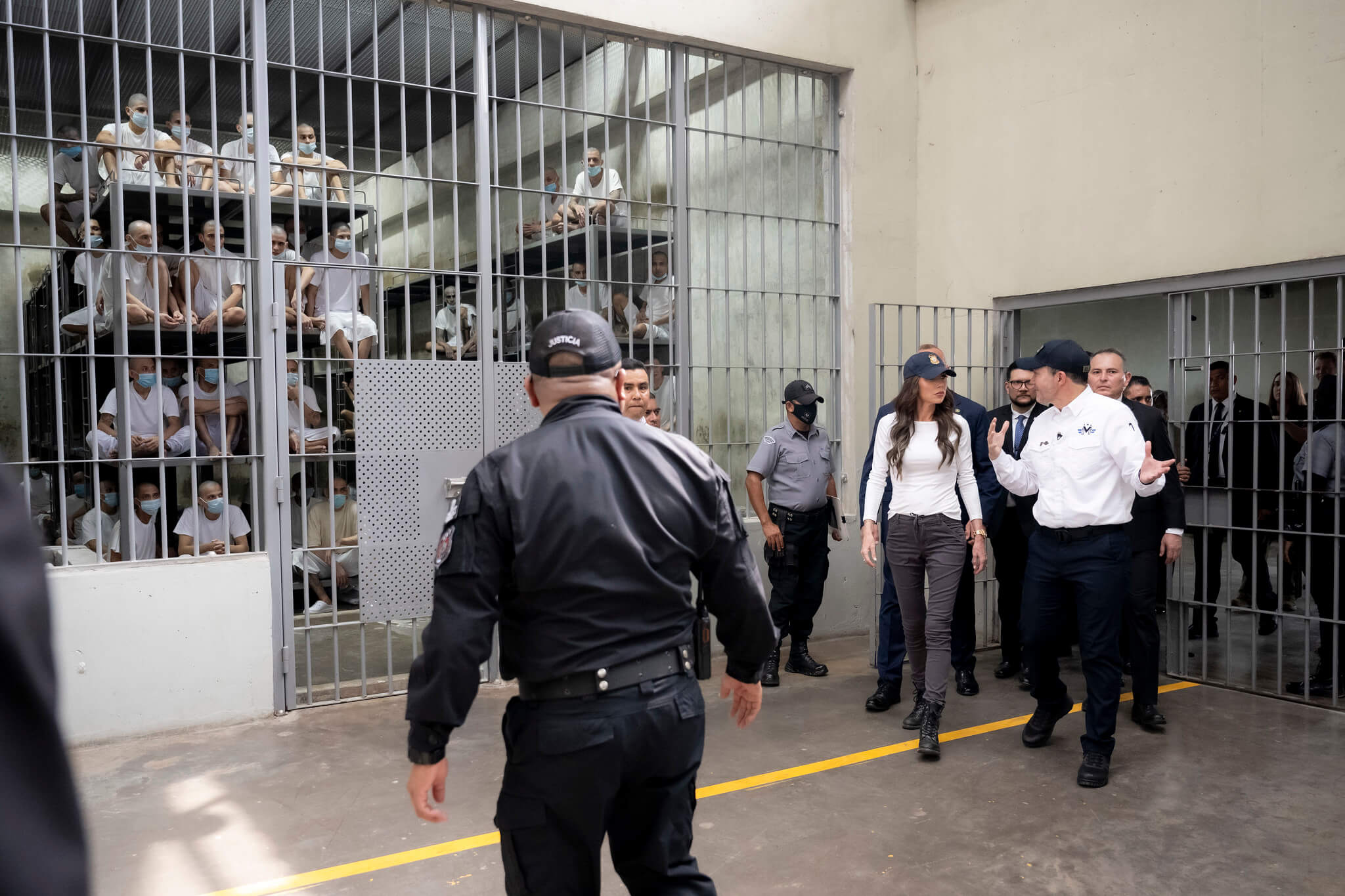The International Legal Implications of "Havana Syndrome"
The possibility of Cuba’s and China’s employment of directed, pulsed radio frequency energy weapons against U.S. personnel could potentially constitute a violation of their treaty obligations.

Published by The Lawfare Institute
in Cooperation With

In 2016, personnel stationed at the U.S. Embassy in Havana, Cuba, developed an unusual set of symptoms and clinical signs. These employees reported a “sudden onset of a loud noise, perceived to have directional features … accompanied by pain in one or both ears or across a broad region of the head, and … a sensation of head pressure or vibration, dizziness, followed … by tinnitus, visual problems, vertigo, and cognitive difficulties.” Personnel assigned to the U.S. Consulate in Guangzhou, China, reported similar symptoms and signs in 2017. As of June 2020, many continue to suffer from these symptoms and other health problems.
A recent study by the National Academies of Sciences, Engineering, and Medicine (NASEM) indicates that the symptoms may have been caused by “directed, pulsed radio frequency (RF) energy”—adding fuel to speculation that these personnel were targeted by a sonic weapon. Reporting suggests that some officials in the U.S. government believe that China and Cuba were involved. Both the existence of a sonic weapon and the involvement of foreign governments has yet to be confirmed. But if China and Cuba were involved, would the use of directed, pulsed RF energy against personnel constitute a use of force or an armed attack under international law that gives rise to the right of self-defense under Article 51 of the U.N. Charter?
Lacking an adequate explanation for these clinical cases from Havana and Guangzhou, the U.S. Department of State asked the NASEM to conduct an independent, expert assessment of the clinical features, epidemiologic investigations and scientific evidence to determine potential causes of the illness.
The NASEM found that the “constellation of acute clinical signs and symptoms with directional and location-specific features” was distinctive and “unlike any disorder in the neurological or general medical literature.” The nature of the phenomenon’s onset and initial features were the most distinctive clinical aspects of the illnesses. The initial symptoms included “the sudden onset of a perceived loud sound; a sensation of intense pressure or vibration in the head; and pain in the ear or more diffusely in the head.” Some personnel also “reported sudden onset of tinnitus, hearing loss, dizziness, unsteady gait, and visual disturbances.” The NASEM determined that, “from a neurologic standpoint, this combination of distinctive, acute, audio-vestibular symptoms and signs suggests localization of a disturbance to the labyrinth or the vestibulocochlear nerve or its brainstem connections.” Nonetheless, the NASEM found that all the cases did not share these distinctive and acute signs and symptoms. Some patients exhibited “only a set of nonspecific, chronic signs and symptoms indicative of disruption of vestibular processing and/or cognition,” as well as insomnia and headache. The NASEM concluded that “these manifestations are more consistent with diffuse involvement of forebrain structures and function, such as cerebral cortex or limbic structures,” raising the possibility of multiple causes or mechanisms among different patients.
Based on the information available, the NASEM determined “that many of the distinctive and acute signs, symptoms, and observations reported” by the employees were “consistent with the effects of directed, pulsed radio frequency (RF) energy.” “Many of the chronic, nonspecific symptoms [were] also consistent with known RF effects,” such as dizziness, headache, fatigue, nausea, anxiety, cognitive deficits and memory loss. The NASEM could not rule out, however, that other mechanisms may have played a reinforcing or additive effect, “producing some of the nonspecific, chronic signs and symptoms, such as persistent postural-perceptual dizziness, a functional vestibular disorder, and [other medical and] psychological conditions.” The NASEM was not, however, able to identify the origin of the RF energy source.
A team of medical researchers based out of the University of Pennsylvania’s Perelman School of Medicine also prepared a report in March 2018 examining the Havana embassy employees. Their report did not positively identify the source of the injuries; however, the lead author of the study subsequently noted “that microwaves were now considered a main suspect and that the team was increasingly sure the diplomats had suffered brain injury.” Moreover, U.S. investigators thoroughly examined the buildings where the employees were located and failed to find evidence of any acoustic devices on the premises that could have caused the injuries. Based on this information, law enforcement officials suspect that the injuries were caused by, in the words of a CNN report, “microwaves beamed from a nearby location and that the ‘sounds’ were merely a means of masking the microwave attacks.”
It is also interesting to note that directed energy microwave devices, enabled by the development of pulsed power, have existed since the 1960s. The “Moscow signal,” for example, involved the repeated irradiation of the U.S. Embassy in Moscow with low-level microwaves by Soviet sources between 1953 and 1976. Numerous countries, including the United States and Russia, continue to have active high-power research programs. However, China’s current research outpaces all other programs. Some U.S. officials believe that the embassy personnel were targeted by an “acoustic sonic weapon.” Testifying before Congress in 2017, U.S. State Department officials unanimously agreed that the two incidents were “attacks.” China and Cuba have denied involvement in the 2016 and 2017 incidents.
U.S. officials have no reason to believe that the incidents in Cuba and China were anything but intentional acts. Evidence suggests that “sophisticated microwaves or another type of electromagnetic weapon” was likely used on the embassy personnel. But, the Department of Defense is also looking at the “possibility that one or more additional technologies were also used, possibly in conjunction with microwaves.” The development of a new microwave weapon that causes long-term brain injuries to unwitting victims would have serious international humanitarian law implications.
Under the U.N. Charter, states are prohibited from threatening or using force against the territorial integrity or political independence of any state. The only exceptions to this prohibition occur when states invoke the right of self-defense or the U.N. Security Council authorizes enforcement measures. If there is a “threat to the peace, breach of the peace or act of aggression,” the Security Council “shall make recommendations, or decide what measures” to take “to maintain or restore international peace and security.” If the Security Council considers that measures not involving the use of force will be inadequate or have proved inadequate, the council “may take such action by air, sea, or land forces as may be necessary to maintain or restore international peace and security.” Nonetheless, states retain their inherent right of individual and collective self-defense if an armed attack occurs, until such time as the Security Council has taken measures necessary to maintain international peace and security.
Articles 2(4), 39, 42 and 51 of the U.N. Charter do not refer to specific weapons. Rather, in the words of an International Court of Justice advisory opinion, “they apply to any use of force, regardless of the weapons employed.” Thus, the use of a nonkinetic weapon that generates directed RF energy that causes physical harm to humans can be considered a use of force or armed attack under international law in certain circumstances.
Like cyberattacks, sonic weapons employ nonkinetic force to conduct an operation. International scholars have done a great deal of work in developing criteria for regulating cyber operations. Because sonic weapons do not employ kinetic force, the use-of-force criteria applicable to cyber operations could be applied mutatis mutandis to sonic attacks. In this regard, Rule 69 of the Tallinn Manual 2.0 provides that “a cyber operation constitutes a use of force when its scale and effects are comparable to non-cyber operations rising to the level of a use of force.” Rule 71 provides that an act “that seriously injures or kills a number of persons or that causes significant damage to, or destruction of, property would satisfy the scale and effects requirement” of an armed attack.
In determining whether a cyber operation constitutes a use of force, the manual identifies eight criteria that states should take into consideration—severity, immediacy, directness, invasiveness, measurability of effects, military character, state involvement and presumptive legality. The most significant factor in the analysis is severity. A cyber operation that causes physical harm to individuals or property qualifies as a use of force. Operations that generate mere inconvenience or irritation do not.
Applying the use-of-force criteria applicable to cyber operations may be a useful analogy to the employment of a directed, pulsed RF energy weapon. It could constitute a use of force or an armed attack if its scale and effects are comparable to a kinetic or physical armed attack.
In the initial case, nearly 40 U.S. government employees experienced dizziness, headaches, fatigue, nausea, anxiety, tinnitus, visual problems, vertigo, cognitive difficulties and memory loss after allegedly being exposed to a directed, pulsed RF energy source. Four years later, many of the employees continue to suffer from these symptoms and other health problems. The severity of these long-term injuries affecting brain functions clearly satisfies the scale and effects requirement of a use of force and/or an armed attack, giving rise to the right of self-defense under Article 51 of the U.N. Charter. But that designation assumes that the attack can be attributed to a state or non-state actor.
Under generally accepted principles of international law, states incur responsibility for their internationally wrongful acts. An internationally wrongful act occurs when an act or omission is attributable to a state under international law and constitutes a breach of an international obligation of that state. A state breaches its international obligations when an act of that state does not conform to its requirements under international law.
The possibility of Cuba’s and China’s employment of directed, pulsed RF energy weapons against U.S. personnel at the U.S. Embassy and U.S. Consulate, respectively, could potentially constitute a violation of their treaty obligations under the U.N. Charter’s prohibition on the use of force. It could also qualify as an international wrongful act for which Cuba and China potentially bear state responsibility. While the U.S. government has not officially designated Cuba or China as the responsible states, if that does occur, Cuba and China would have an obligation to make full reparation for the injury caused by their internationally wrongful acts. Full reparation could include restitution, compensation and/or satisfaction.
What would those remedies look like if China and Cuba are the responsible actors? Restitution could require that Cuba and China reestablish the situation that existed before the wrongful act was committed. Given the long-term adverse health consequences associated with the attack, it would be impossible for Cuba and China to restore the victims’ health status quo ante. Since restitution is unavailable or is insufficient to correct the U.S. employees’ injuries, Cuba and China might then have a legal obligation to pay compensation for the injuries caused by their internationally wrongful acts, which could include any financially assessable damage such as medical expenses. Cuba and China may also be required to pay interest on any principal sum due, if necessary, to ensure full reparation, which accrues from the date the principal sum should have been paid until the date the obligation is paid in full. Both governments could also be required to give satisfaction for their misdeeds—an acknowledgement that they breached their international obligations under the U.N. Charter, and a formal apology to the U.S. government and its injured employees for the suffering they have caused.
U.S. adversaries are increasingly relying on nontraditional means and methods to conduct malign activities against the United States and its allies and partners. If China and Cuba are responsible for these injuries, it would be reckless and negligent for the United States to allow adversaries to conduct armed attacks resulting in permanent medical injury to U.S. citizens without demanding consequences and compensation for their wrongful acts. If the U.S. is ignoring a nation’s use of force against its personnel, inaction could undercut the purpose, obligations and remedies outlined in the U.N. Charter.




